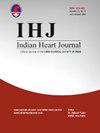A contemporary review of the head-up tilt test: Utility and limitations
IF 1.8
Q3 CARDIAC & CARDIOVASCULAR SYSTEMS
引用次数: 0
Abstract
The Head-Up Tilt Test (HUTT) has been widely used for the past four decades as part of the overall assessment of the potential causes of collapse in patients with recurring transient loss of consciousness (TLOC) of unknown cause. The ability of a positive HUTT often to reproduce patient symptoms and illustrate to the patient that the physician is confident of the diagnosis have been major advances in clinical TLOC management. Tilt testing has been particularly important in understanding and diagnosing vasovagal syncope (VVS) and orthostatic hypotension.
Despite HUTT having great clinical utility, different HUTT protocols and drug provocations result in different test yields. Limited HUTT reproducibility has led some researchers to criticize HUTT utility. As in most medical tests, limitations are part of the test.
Herein, we provide a contemporary review of HUTT's utility in diagnosing and managing various TLOC disorders with intent to clarify its role in clinical practice.
平视倾斜试验的当代回顾:效用与局限性。
在过去的四十年里,平视倾斜试验(HUTT)被广泛用于对不明原因的复发性短暂性意识丧失(TLOC)患者晕倒的潜在原因进行全面评估。临床TLOC管理的主要进展是,HUTT阳性通常能够重现患者症状,并向患者说明医生对诊断有信心。倾斜试验在理解和诊断血管迷走神经性晕厥(VVS)和体位性低血压方面尤为重要。尽管HUTT有很大的临床应用,不同的HUTT方案和药物刺激导致不同的试验产量。有限的HUTT可重复性导致一些研究人员批评HUTT的效用。和大多数医学测试一样,限制也是测试的一部分。在此,我们对HUTT在诊断和管理各种TLOC疾病中的应用进行了当代回顾,旨在阐明其在临床实践中的作用。
本文章由计算机程序翻译,如有差异,请以英文原文为准。
求助全文
约1分钟内获得全文
求助全文
来源期刊

Indian heart journal
CARDIAC & CARDIOVASCULAR SYSTEMS-
CiteScore
2.60
自引率
6.70%
发文量
82
审稿时长
52 days
期刊介绍:
Indian Heart Journal (IHJ) is the official peer-reviewed open access journal of Cardiological Society of India and accepts articles for publication from across the globe. The journal aims to promote high quality research and serve as a platform for dissemination of scientific information in cardiology with particular focus on South Asia. The journal aims to publish cutting edge research in the field of clinical as well as non-clinical cardiology - including cardiovascular medicine and surgery. Some of the topics covered are Heart Failure, Coronary Artery Disease, Hypertension, Interventional Cardiology, Cardiac Surgery, Valvular Heart Disease, Pulmonary Hypertension and Infective Endocarditis. IHJ open access invites original research articles, research briefs, perspective, case reports, case vignette, cardiovascular images, cardiovascular graphics, research letters, correspondence, reader forum, and interesting photographs, for publication. IHJ open access also publishes theme-based special issues and abstracts of papers presented at the annual conference of the Cardiological Society of India.
 求助内容:
求助内容: 应助结果提醒方式:
应助结果提醒方式:


